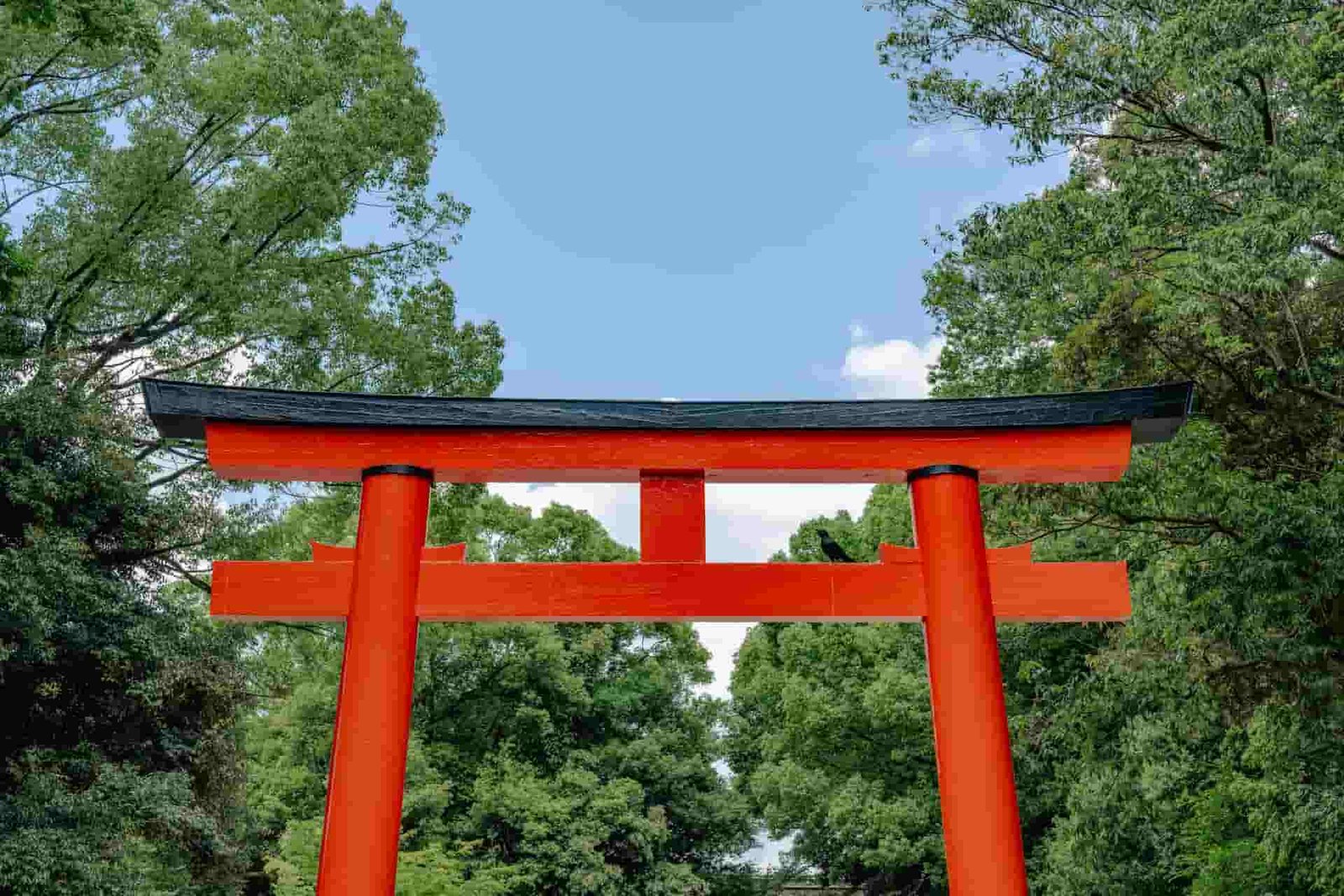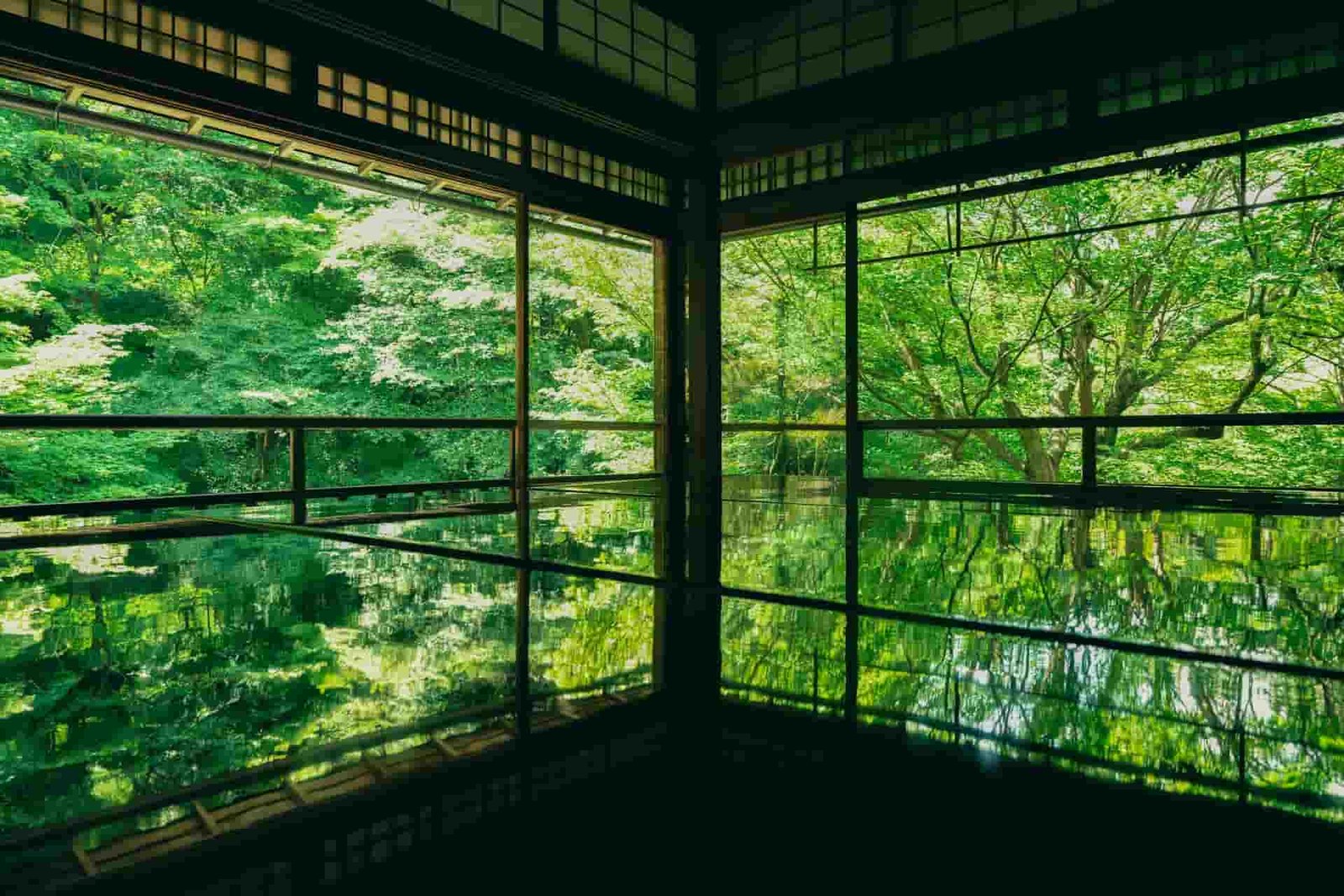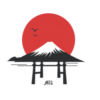Japan’s Micro Seasons: Splitting the Year in 72 Lyrical Bits
Japan’s micro seasons split the world in five-day increments. It’s an ancient system that turns each year into a gentle conversation with nature.
An appoach that may change how you see time.
It may be hard to reconcile the idea of Japan’s micro seasons with the ojii-san (old man) joke that Japan only has two seasons: atsui desu ne? (“It’s hot, isn’t it?”) and samui desu ne? (“It’s cold, isn’t it?”).
If you have had the “honour” of August in Tokyo or January in Hokkaido, you will recognise the truth behind that joke.
Traditionally, Japan used the numbers 24 and 72 to Japan split its year into more than humid, cicada-screeching heat and breath-cloud, snow-crunching-under-foot duality.
The system captures small shifts in the natural world and marks turning time in ways that vary between dead-pan observations and a continuous, lyrical conversation with nature.
A history of Japan’s seasonal calendars
Japan’s micro season calendars originated in China and arrived in the country via Korea during the Asuka period (6th–7th centuries).
The Imperial Court adopted a lunisolar calendar that tracked the movements of both sun and moon. This imported system, called koyomi (暦), split the year into 24 sekki (solar terms), each lasting roughly half a month. Farmers relied on these divisions for guidance on planting, harvesting, and other agricultural activities.
Each sekki was further divided into three kō (micro seasons). My Texas Instruments calculator tells me that equals 72 micro seasons.
Originally, the seasons had names that reflected the Chinese climate and landscapes. However, Japan’s court astronomer Shibukawa Shunkai adapted them to local conditions in the 17th century.
The result is a uniquely Japanese lyrical “natural diary” that describes how the landscape and wildlife change, including leaping fish, thawing river ice, and hawks learning to fly, throughout the year. The ect dates for each can vary slightly from year to year.
While the Gregorian calendar replaced the lunisolar system in 1872, the 72 kō still linger in Japan’s literature, arts, cuisine, and seasonal rituals.

24 Sekki — the deadpan seasonal divisions
The 24 sekki are the backbone of Japan’s traditional calendar. Each marks a major turning point in the year, from the first stirrings of spring to the deep stillness of winter. Originally tied to agricultural cycles, they detail natural changes.
Compared to the kō, the sekki are, as you will see below, somewhat more deadpan observations on the weather and seasonal changes.
Spring
- Feb 3 – Risshun (立春): Beginning of spring
- Feb 18 – Usui (雨水): Rainwater; snow turns to rain
- Mar 5 – Keichitsu (啓蟄): Insects awaken from hibernation
- Mar 20 – Shunbun (春分): Spring equinox
- Apr 4 – Seimei (清明): Pure and clear; flowers bloom
- Apr 20 – Kokuu (穀雨): Grain rains; nourishing crops
Summer
- May 5 – Rikka (立夏): Beginning of summer
- May 21 – Shōman (小満): Lesser ripening; plants grow lush
- Jun 5 – Bōshu (芒種): Grain in ear; rice planting
- Jun 21 – Geshi (夏至): Summer solstice
- Jul 7 – Shōsho (小暑): Lesser heat
- Jul 22 – Taisho (大暑): Greater heat
Autumn
- Aug 7 – Risshū (立秋): Beginning of autumn
- Aug 23 – Shosho (処暑): Manageable heat
- Sep 7 – Hakuro (白露): White dew
- Sep 23 – Shūbun (秋分): Autumn equinox
- Oct 8 – Kanro (寒露): Cold dew
- Oct 23 – Sōkō (霜降): Frost descends
Winter
- Nov 7 – Rittō (立冬): Beginning of winter
- Nov 22 – Shōsetsu (小雪): Lesser snow
- Dec 7 – Taisetsu (大雪): Greater snow
- Dec 22 – Tōji (冬至): Winter solstice
- Jan 5 – Shōkan (小寒): Lesser cold
- Jan 20 – Daikan (大寒): Greater cold
The 72 kō — Japan’s poetic micro seasons
Each sekki divides into three kō, or micro seasons, each lasting about five days. These short intervals reflect natural events: animal behaviours, plant life cycles, and weather changes.
However, compared to the sekki, they contain more lyrical and poetic observations of natural events. Reading through them may indeed feel like walking along a year-long nature trail, noticing what’s emerging, fading, and transforming as you pass.
Below, each sekki contains its three kō in order, with approximate dates:
Risshun (Beginning of Spring)
- Feb 4–8: Harukaze kōri o toku (東風解凍) – East wind melts the ice
- Feb 9–13: Kōō kenkan su (黄鶯睍睆) – Bush warblers start singing
- Feb 14–18: Uo kōri o izuru (魚上氷) – Fish emerge from the ice
Usui (Rainwater)
- Feb 19–23: Tsuchi no shō uruoi okoru (土脉潤起) – Rain moistens the soil
- Feb 24–28: Kasumi hajimete tanabiku (霞始靆) – Mist starts to linger
- Mar 1–5: Sōmoku mebae izuru (草木萌動) – Grass sprouts, trees bud
Keichitsu (Insects Awaken)
- Mar 6–10: Sugomori mushito o hiraku (蟄虫啓戸) – Hibernating insects surface
- Mar 11–15: Momo hajimete saku (桃始笑) – First peach blossoms
- Mar 16–20: Namushi chō to naru (菜虫化蝶) – Caterpillars become butterflies
Shunbun (Spring Equinox)
- Mar 21–25: Suzume hajimete sukū (雀始巣) – Sparrows start to nest
- Mar 26–30: Sakura hajimete saku (櫻始開) – First cherry blossoms
- Mar 31–Apr 4: Kaminari sunawachi koe o hassu (雷乃発声) – Distant thunder
Seimei (Pure and Clear)
- Apr 5–9: Tsubame kitaru (玄鳥至) – Swallows return
- Apr 10–14: Kōgan kaeru (鴻雁北) – Wild geese fly north
- Apr 15–19: Niji hajimete arawaru (虹始見) – First rainbows
Kokuu (Grain Rains)
- Apr 20–24: Ashi hajimete shōzu (葭始生) – First reeds sprout
- Apr 25–29: Shimo yamite nae izuru (霜止出苗) – Last frost, rice seedlings grow
- Apr 30–May 4: Botan hana saku (牡丹華) – Peonies bloom
Rikka (Beginning of Summer)
- May 5–9: Kawazu hajimete naku (蛙始鳴) – Frogs start singing
- May 10–14: Mimizu izuru (蚯蚓出) – Worms surface
- May 15–20: Takenoko shōzu (竹笋生) – Bamboo shoots sprout
Shōman (Lesser Ripening)
- May 21–25: Kaiko okite kuwa o hamu (蚕起食桑) – Silkworms start feasting on mulberry leaves
- May 26–30: Benibana sakau (紅花栄) – Safflowers bloom
- May 31–Jun 5: Mugi no toki itaru (麦秋至) – Wheat ripens and is harvested
Bōshu (Grain Beards and Seeds)
- Jun 6–10: Kamakiri shōzu (蟷螂生) – Praying mantises hatch
- Jun 11–15: Kusaretaru kusa hotaru to naru (腐草為螢) – Rotten grass becomes fireflies
- Jun 16–20: Ume no mi kibamu (梅子黄) – Plums turn yellow
Geshi (Summer Solstice)
- Jun 21–26: Natsukarekusa karuru (乃東枯) – Self-heal withers
- Jun 27–Jul 1: Ayame hana saku (菖蒲華) – Irises bloom
- Jul 2–6: Hange shōzu (半夏生) – Crow-dipper sprouts
Shōsho (Lesser Heat)
- Jul 7–11: Atsukaze itaru (温風至) – Warm winds blow
- Jul 12–16: Hasu hajimete hiraku (蓮始開) – First lotus blossoms
- Jul 17–22: Taka sunawachi waza o narau (鷹乃学習) – Hawks learn to fly
Taisho (Greater Heat)
- Jul 23–28: Kiri hajimete hana o musubu (桐始結花) – Paulownia trees produce seeds
- Jul 29–Aug 2: Tsuchi uruōte mushi atsushi (土潤溽暑) – Earth is damp, air is humid
- Aug 3–7: Taiu tokidoki furu (大雨時行) – Great rains sometimes fall
Risshū (Beginning of Autumn)
- Aug 8–12: Suzukaze itaru (涼風至) – Cool winds blow
- Aug 13–17: Higurashi naku (寒蝉鳴) – Evening cicadas sing
- Aug 18–22: Fukaki kiri matō (蒙霧升降) – Thick fog descends
Shosho (Manageable Heat)
- Aug 23–27: Wata no hana shibe hiraku (綿柎開) – Cotton flowers bloom
- Aug 28–Sep 1: Tenchi hajimete samushi (天地始粛) – Heat starts to die down
- Sep 2–7: Kokumono sunawachi minoru (禾乃登) – Rice ripens
Hakuro (White Dew)
- Sep 8–12: Kusa no tsuyu shiroshi (草露白) – Dew glistens white on grass
- Sep 13–17: Sekirei naku (鶺鴒鳴) – Wagtails sing
- Sep 18–22: Tsubame saru (玄鳥去) – Swallows leave
Shūbun (Autumn Equinox)
- Sep 23–27: Kaminari sunawachi koe o osamu (雷乃収声) – Thunder ceases
- Sep 28–Oct 2: Mushi kakurete to o fusagu (蟄虫坏戸) – Insects hole up underground
- Oct 3–7: Mizu hajimete karuru (水始涸) – Farmers drain fields
Kanro (Cold Dew)
- Oct 8–12: Kōgan kitaru (鴻雁来) – Wild geese return
- Oct 13–17: Kiku no hana hiraku (菊花開) – Chrysanthemums bloom
- Oct 18–22: Kirigirisu to ni ari (蟋蟀在戸) – Crickets chirp around the door
Sōkō (Frost Falls)
- Oct 23–27: Shimo hajimete furu (霜始降) – First frost
- Oct 28–Nov 1: Kosame tokidoki furu (霎時施) – Light rains sometimes fall
- Nov 2–6: Momiji tsuta kibamu (楓蔦黄) – Maple leaves and ivy turn yellow
Rittō (Beginning of Winter)
- Nov 7–11: Tsubaki hajimete hiraku (山茶始開) – Camellias bloom
- Nov 12–16: Chi hajimete kōru (地始凍) – Land starts to freeze
- Nov 17–21: Kinsenka saku (金盞香) – Daffodils bloom
Shōsetsu (Lesser Snow)
- Nov 22–26: Niji kakurete miezu (虹蔵不見) – Rainbows hide
- Nov 27–Dec 1: Kitakaze konoha o harau (朔風払葉) – North wind blows the leaves from the trees
- Dec 2–6: Tachibana hajimete kibamu (橘始黄) – Tachibana citrus leaves turn yellow
Taisetsu (Greater Snow)
- Dec 7–11: Sora samuku fuyu to naru (閉塞成冬) – Cold sets in, winter begins
- Dec 12–16: Kuma ana ni komoru (熊蟄穴) – Bears start hibernating
- Dec 17–21: Sake no uo muragaru (鱖魚群) – Salmon gather and swim upstream
Tōji (Winter Solstice)
- Dec 22–26: Natsukarekusa shōzu (乃東生) – Self-heal sprouts
- Dec 27–31: Sawashika no tsuno otsuru (麋角解) – Deer shed antlers
- Jan 1–4: Yuki watarite mugi nobiru (雪下出麦) – Wheat sprouts under snow
Shōkan (Lesser Cold)
- Jan 5–9: Seri sunawachi sakau (芹乃栄) – Parsley flourishes
- Jan 10–14: Shimizu atataka o fukumu (水泉動) – Springs thaw
- Jan 15–19: Kiji hajimete naku (雉始雊) – Pheasants start to call
Daikan (Greater Cold)
- Jan 20–24: Fuki no hana saku (款冬華) – Butterburs bud
- Jan 25–29: Sawamizu kōri tsumeru (水沢腹堅) – Ice thickens on streams
- Jan 30–Feb 3: Niwatori hajimete toya ni tsuku (鶏始乳) – Hens start laying eggs

Micro seasons and the arts
You can find echoes of the micro season calendar reverberating throughout Japan to this day.
For example, in Noh theatre’s seasonal motifs guide costumes, masks, and even performance choices, like wisteria spirits in spring, chrysanthemums in autumn, or hawks and herons in summer dances.
In haiku and waka, poets often use kigo (seasonal words) drawn from the micro season cycle to evoke a moment’s mood with precision in sentences like “blooming summer’s first peach” or “shed antlers buried under fallen Sakura blossoms.” Yes, in case you were wondering, those are both from my private, ham-fisted attempts at poetry I have under lock and key to protect humanity from harm.
Cuisine in step with 72 micro seasons
In Japanese food culture, the principle of shun, enjoying an ingredient at the precise moment it’s at its best, is closely connected with of the micro season system.
Some restaurants, especially those serving kaiseki ryōri, often design menus around these short windows, offering fleeting delicacies that won’t reappear until next year.
Some examples of this include lightly blanched nanohana (rapeseed shoots) dressed with mustard-miso, matsutake mushrooms in clear broth, and Sakura mochi rice cakes wrapped in pickled cherry leaves to coincide with the first cherry blossoms.
If you have about 26 minutes to spare, I can warmly recommend learning more and bout connection between micro seasons and food found in this video.
Taking time to breathe
Not to venture too far into old man territory (get off my lawn!!!), but over time, I have come to appreciate the 72 micro seasons in the same way that I see Sakura.
My – and probably your – everyday life often feels so full of calendar alerts, app notifications, online meetings, and deadlines (to quote Douglas Adams, I love the whooshing sound they make as they fly by).
In contrast, 72 micro seasons are a lyrical reminder to stop up from time to time and notice the pulse of the natural world. To slow things down, take a deep breath, be present and appreciative – and then go to enjoy some of the amazing seasonal foods Japan has on offer with the people you love.
Photo credits:
Top photo by Kaori Chin on Unsplash
1st in-article photo by ayumi kubo on Unsplash
